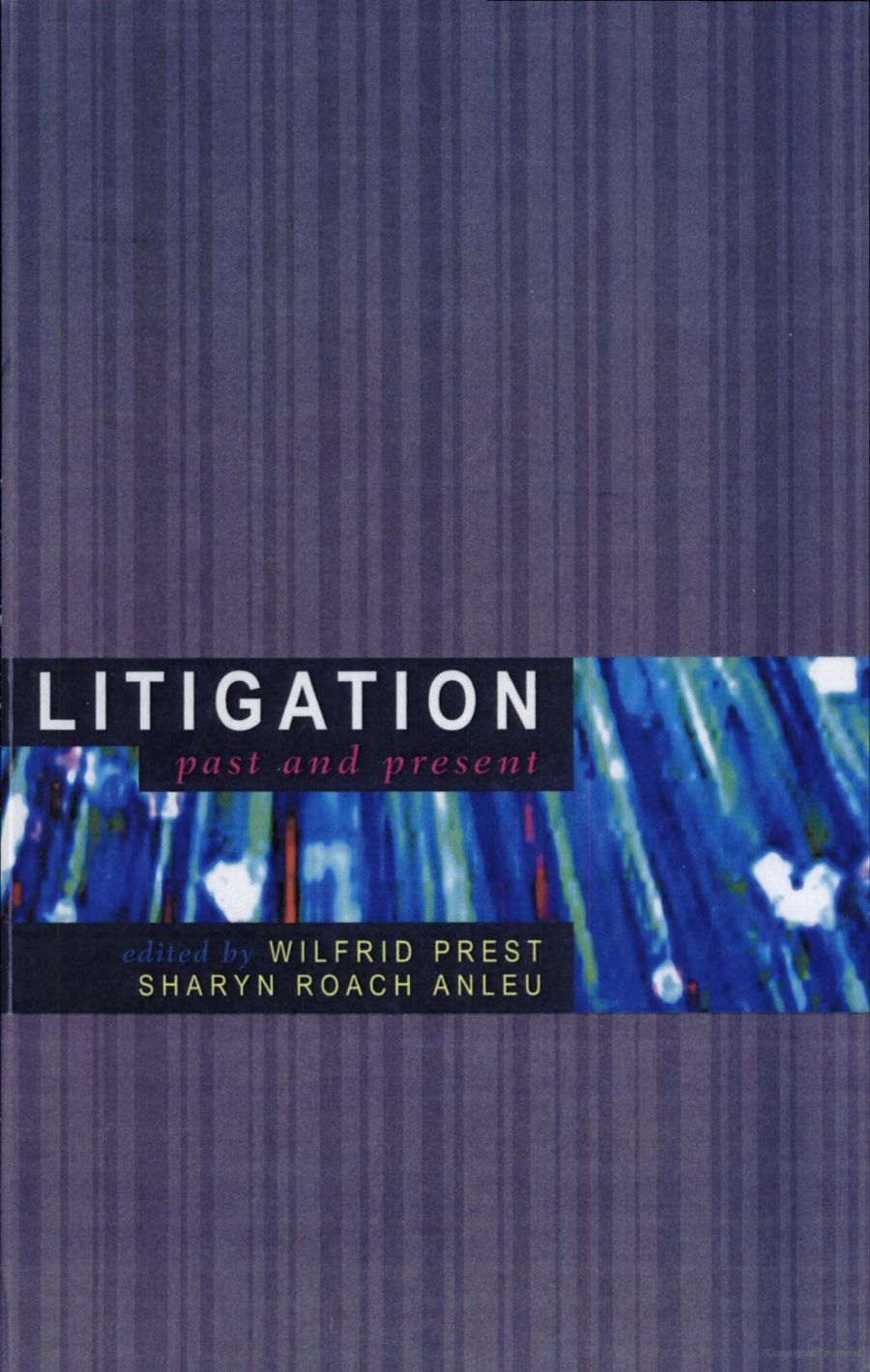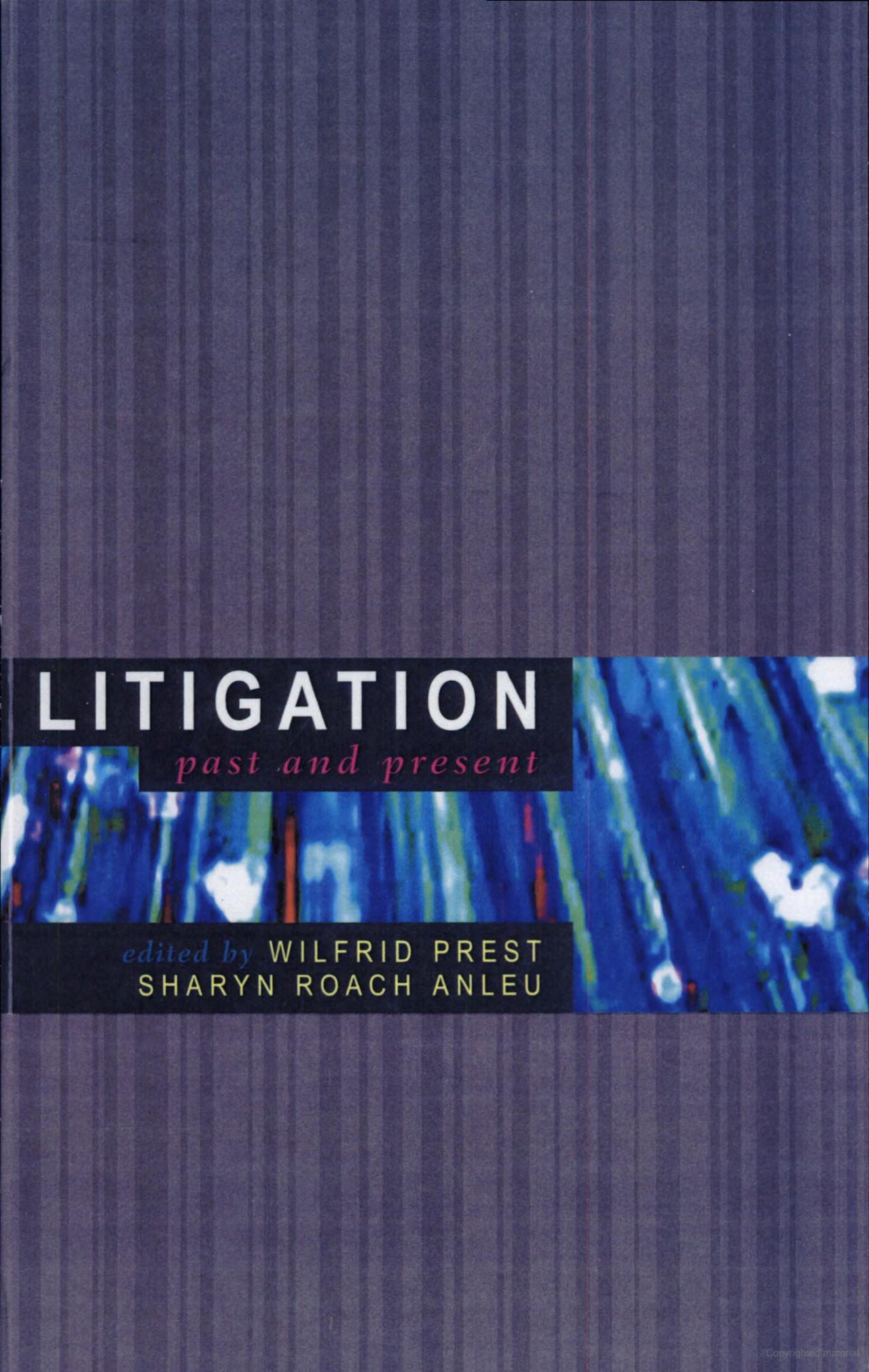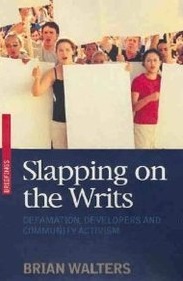
- Free Article: No
- Contents Category: Law
- Review Article: Yes
- Article Title: The Litigation Myth
- Online Only: No
- Custom Highlight Text:
One could be forgiven for thinking that Australia is suffering a litigation explosion. Newspapers have been full of reports of supposedly undeserving plaintiffs receiving million-dollar damages awards; governments have introduced legislation to limit pay-outs; local authorities and volunteer organisations have cancelled events due to concerns over public liability; and insurers have blamed rising premiums on unsustainable damages awards. Even the courts have joined the chorus: several leading judges recently declared the justice system to be in crisis due to increasing litigiousness, lawyers who stir up claims and a judiciary that has, according to one recently retired judge, ‘enjoyed playing Santa Claus’.
- Book 1 Title: Litigation
- Book 1 Subtitle: Past and present
- Book 1 Biblio: UNSW Press, $65 hb, 222 pp
- Book 1 Cover Small (400 x 600):

- Book 1 Cover (800 x 1200):

- Book 2 Title: Slapping on the Writs
- Book 2 Subtitle: Defamation, developers and community activism
- Book 2 Biblio: UNSW Press, $16.95 pb, 95 pp
- Book 2 Cover Small (400 x 600):

- Book 2 Cover (800 x 1200):

Missing from these reports has been the articulation of what would be a ‘normal’ or sustainable level of litigation. This is not surprising because, until recently, few people had actually bothered to go through the court records and count the number of civil suits filed in Australia from year to year. How would the reports of ever-increasing litigation stand up to empirical evidence?
Litigation: Past and present provides some answers. This timely edition examines contemporary claims about litigation rates from a social-historical perspective. As the editors make clear in their introduction, reports of a litigation ‘crisis’ sit uneasily with the recent findings of a federal agency that the number of civil suits commenced in Australian courts (excluding Family Court proceedings) declined by an average of four per cent in the 1999 and 2000 financial years. Such statistics would appear to underscore the strong disincentives to litigation, particularly for individuals, who face potentially crippling costs in the event of an unsuccessful suit. Moreover, the funding of legal aid has been in decline for several years.
Indeed, several of the contributors to this edition provide evidence that the crisis of litigiousness is illusory. Ted Wright and Angela Melville, who examined records of the New South Wales civil courts over a thirty-year period, conclude that the popular belief of increasing litigation in that state cannot be sustained. They note that the opposite may in fact be true. David Weisbrot and Ian Davis review the four-year inquiry into the federal civil justice system by the Australian Law Reform Commission, which found no evidence of a ‘crisis’ in that jurisdiction and, in particular, no evidence of an ‘explosion’ of litigation. Furthermore, Weisbrot and Davis note that the Commission found no evidence that the advent of contingency fees, representative actions or the increasing commercialisation of legal services has produced any significant adverse effect upon the federal civil justice system.
The most exhaustive study is that of Christopher Brooks, who examined litigation rates in England back to the late twelfth century. Brooks finds that court usage in England was at its height not in the modern period but at around the time of William Shakespeare. He notes that the history of litigation in England has been marked by significant fluctuations, nearly all of which can be attributed to demographic and social, as opposed to purely legal, changes.
Despite the methodological issues inherent in such research, the findings of the contributors are nonetheless significant and serve to undermine contemporary reports about litigation rates. To this extent, the book is an important contribution to a current debate. While mainly historical and statistical in focus, several of the contributions will appeal to general interest. Hilary Golder, Rosemary Hunter and Diane Kirkby review divorce litigation in Australia at around the time of Federation, noting the difficulties that women faced under the fault-based system in place at that time. David Bamford reviews litigation reform from 1980 to 2000, noting the increasing importance of ADR and case management in the Australian justice system. The collection concludes with a timely review of recent developments in Australian indigenous litigation by Larissa Behrendt and Shirley Scott.
The title of Brian Walters’s book Slapping on the Writs: Defamation, developers and community activism is a pun on the acronym SLAPP, which stands for ‘strategic litigation against public participation’. The acronym, coined in the US, describes a type of suit instituted for the purpose of shutting down discourse on some issue of public interest or concern. In Australia, the issues of public interest or concern have usually been controversial property developments, and the property developers’ instrument of choice has been the defamation writ. Slapping on the Writs reviews recent actions where the institution of defamation proceedings has had a chilling effect on debate about some development project.
The case studies make for disturbing reading: activists opposed to the felling of a stand of yellow gum trees distributed a bumper bar sticker to advertise their cause and were served with writs on Christmas Eve; a letter to a newspaper opposing the development of heritage land produced an immediate threat of legal action against the writer; a conservationist’s statement that a developer had brought a suit for the purpose of silencing criticism was itself found to be defamatory and the conservationist ordered to pay damages.
One is left with the impression of a law that has misfired. Developers who sue environmental or heritage groups are able to claim the costs of the proceedings as a tax-deductible business expense, while activists who defend the proceedings risk losing their homes. Most activists submit to defamation suits because they cannot afford to fight them through the courts; indeed, the mere threat of legal action by a developer is often sufficient to silence a critic. The case studies are full of such examples. As the author points out, it is not enough for an activist to be right.
How can the law of defamation be kept within democratic limits? The courts do possess the power to strike out proceedings on the ground of abuse of process, but this discretion collides with the plaintiff’s well-entrenched right to sue. As courts are geared to resolving disputes between individual litigants, they are not particularly adept at examining the bigger democratic picture. In consequence, most cases are allowed to proceed.
Walters proposes legislation to increase the courts’ powers to limit proceedings that impact upon free expression, along the lines of similar laws in operation in some parts of the US. However, in the absence of any explicit constitutional guarantee of free speech in Australia, it is not clear how effective such a law would be.
Slapping on the Writs also provides a highly useful and accessible general overview of the law of defamation in Australia, including a helpful glossary. Although not intended to cover the particular laws of the various states and territories in detail, the summary goes some way towards demystifying this difficult area of law. The style is accessible and down-to-earth.
Each of these books makes a welcome contribution to current debates concerning litigation in Australia.


Comments powered by CComment